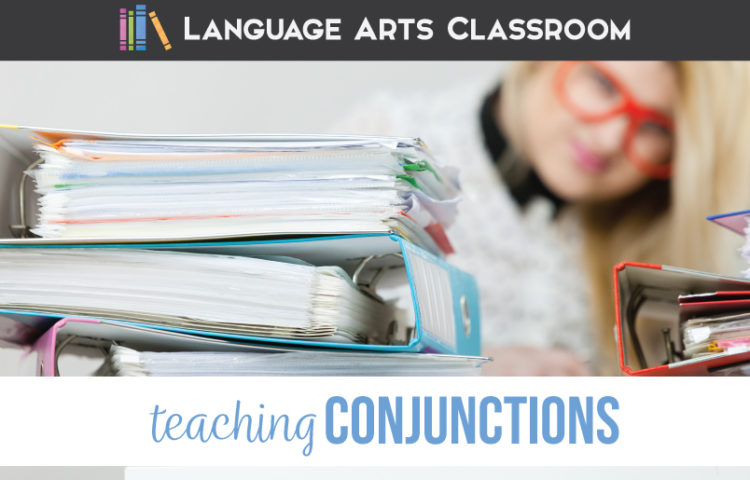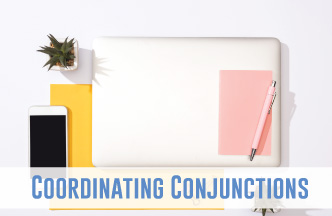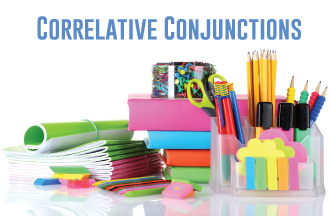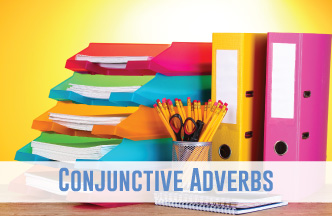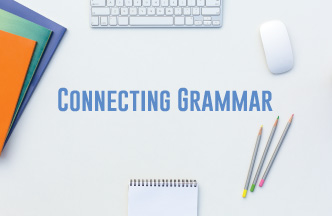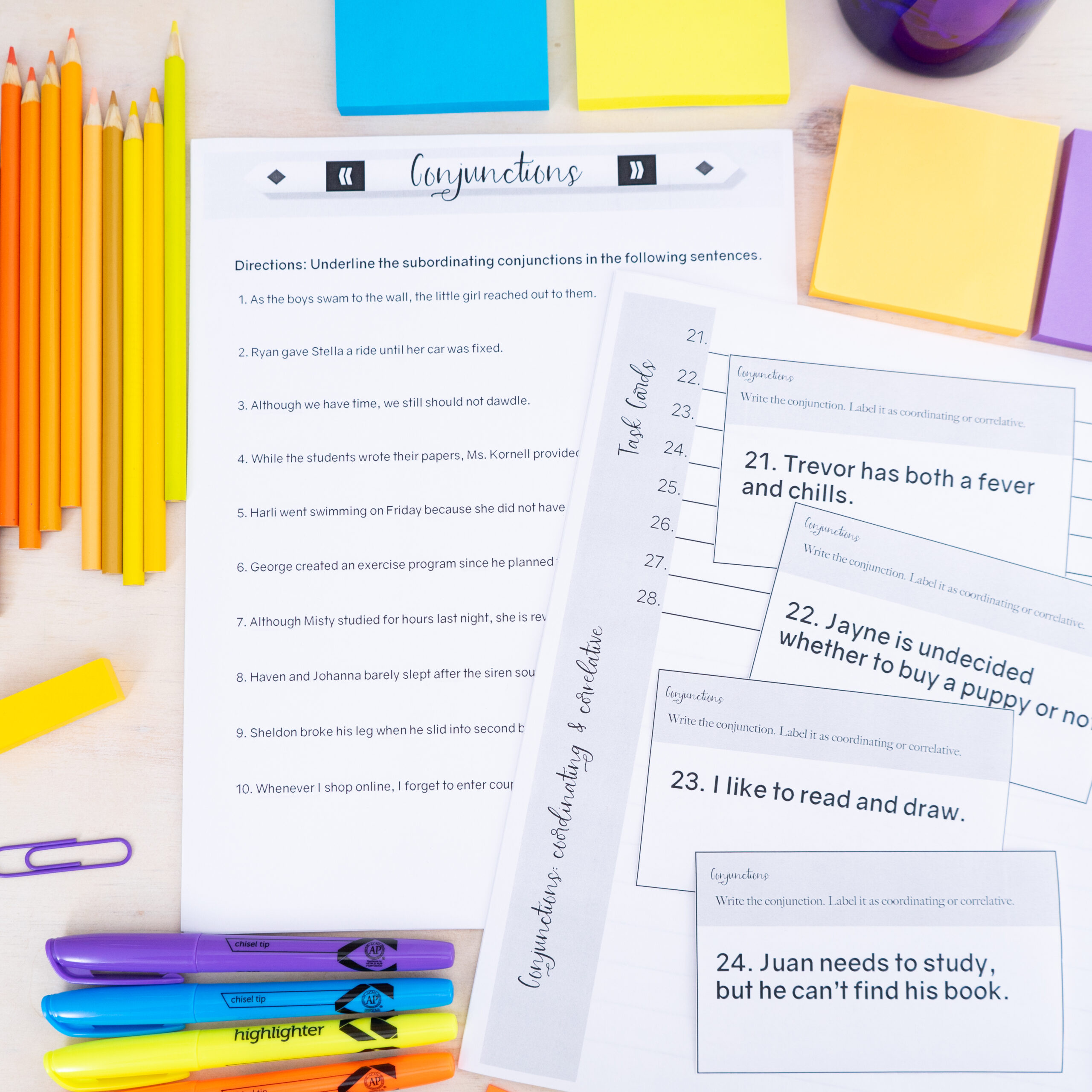Conjunctions lesson plans? Conjunctions activities? Here is an overview of teaching conjunctions for you!
Conjunctions: puzzle pieces, glue. Conjunctions join words, phrases, and clauses. You are probably looking for activities that are not conjunction worksheets. Hopefully, these conjunction activities inspire you.
If you do have a conjunction worksheet, you can download my activities to add to any grammar worksheet. These activities will elevate student thinking with grammar. You can easily turn a worksheet into a conjunctions activity!
Now that I’ve given you some options, I’m going to outline my lesson plan for conjunctions. The biggest decision in conjunctions lesson plans is what conjunctions you will teach and when.
I do NOT teach subordinating conjunctions with coordinating and correlative conjunctions and conjunctive adverbs. If you do, your conjunctions lesson plans will look different than what is outlined below.
Typically, we learn conjunctions after prepositions. They are actually the last part of speech covered because I spend about two seconds on interjections.
When I teach conjunctions with older students, we work on semicolon and comma use. Students are aware of conjunctions, but they simply need a review with a few conjunction activities before we work on harder concepts. Punctuation use lessons align with teaching coordinating conjunctions, providing correlative conjunctions activities, working on conjunctive adverbs. . .you get the picture!
Teaching Conjunctions
Punctuation and parallelism rules deal with conjunctions, so these parts of speech are not going anywhere. To make the learning process more enjoyable, consider incorporating a variety of activities into your lesson plans.
They play a crucial role in understanding advanced grammatical concepts, so it is important not to rush through this topic.
I hope you can fit these conjunctions lesson plans to fit your needs.
Basic Conjunctions — Coordinating Conjunctions
FANBOYS
With teaching coordinating conjunctions, the best technique is to write with learners and let them see how to use the words. Doing so also builds off prior knowledge.
Day one of conjunctions, I work with FANBOYS, our coordinating conjunctions. We list what the FANBOYS are, but I take it a step further and write with classes. Students can say they know FANBOYS, and they can even list them. Until they can use them in writing and create those sentences using each one, I’m not convinced that they really understand those coordinating conjunctions. One reason we teach conjunction is so that young writers own a greater variety of words to enhance their writing. So, a quick practice with with the FANBOY conjunctions might look like:
- We brought bottled water, for we are often thirsty.
- For dinner, Dad made peas and carrots.
- I never tried out, nor do I regret not doing so.
- Charlize gave me a pencil, but I need a pen.
- Would you like an apple or an orange?
- Tom’s assignment is due, yet the printer is broken.
- I am late, so I don’t understand the assignment.
If you are nervous about writing on the spot, create pre-made sentences to avoid extra problems (or copy and paste those examples above). You can substitute subjects and verbs as students participate. Soon, students will own new words for adding to their sentences. FANBOY conjunctions will come naturally the more you work with them.
Tips: Be sure that you have a “so” sentence prepared in advance. Oftentimes, “so that” will sneak in, and “so that” is subordinating, not coordinating. Students might also struggle with “for” as it is not frequently used. Remind students you’re building their vocabulary and asking them to think.
Writing these conjunctions and practicing them with students will definitely boost your confidence. And I promise, after you teach grammar bunches you’ll be able to just have fun with your students, and you won’t need pre-made sentences. If you’re just starting with conjunctions lesson plans, make the sentences ahead of time.
Correlative Conjunctions Lesson Plan
Next, we study correlative conjunctions, and we review the list and practice writing them in sentences. With correlative conjunctions activities, I consider what students do and do not know. I honestly think some students don’t even know of these combinations like “not only, but also.” These conjunctions are writing tools, though.
I encourage students to make the sentences, and they always create something so funny! (Students love to talk about animals and vomit, so I always get these really goofy sentences.) For instance:
- My dog likes pizza. (Independent clause. . . ask students to make another one.)
- My dog likes pizza, and he throws it up. (Now we have two independent clauses joined with a coordinating conjunction.)
- Not only does my dog eat pizza, but he also vomits. (Two independent clauses joined with a correlative conjunction.)
After students know two types of conjunctions, I typically start with grammar manipulations. If you don’t know what grammar manipulatives are, they are little pieces that students can manipulate. You can create these words to manipulate, put them on little squares, and cut them out. (You can laminate the grammar manipulatives, but I prefer cardstock. Some teachers put them on blocks.)
At this point, we have listed, studied, written, and practiced coordinating and correlative conjunctions.
Conjunctive Adverbs Lesson Plan + Introducing the Semicolon
I introduce the semicolon and the comma along with conjunctive adverbs. With older students, conjunctions activities can easily include punctuation rules. I keep the goofy sentences on the board or an anchor chart. After we discuss conjunctive adverbs like “however,” “meanwhile,” “therefore,” and “otherwise,” we add to our sentences:
“We have to keep pizza away from my dog; otherwise, he will vomit.”
You can use the grammar manipulatives to build with conjunctive adverbs. Sticky notes work so that we can move around different components of sentences and join them with a variety of conjunctions. (Remind students to use a variety of conjunctions.) If you need a grade, ask students to take a picture of their creations, or ask them to write them out. A checklist works too. Conjunction activities can be simple!
If you’re not comfortable with grammar, and this is something that’s kind of new and kind of scary, you might want to have independent clauses (a simple sentence, a subject and a verb, probably a direct object) pre-made. Most ELA teachers have experienced struggle with grammar lessons. The more you build your conjunction activities, the more natural your presentation will be.
Connection to writing and literature
Conjunctions activities should include writing and literature. Students understand conjunctions the more they see those words in writing and literature.
We write with every grammar lesson. To emphasize conjunctions with student writing, you can ask them to find conjunctions in their writing and to check punctuation.
Conjunctions can be tough with the punctuation rules. You’re joining clauses, phrases, and words with conjunctions. Remind classes of punctuation rules as you build sentences. If you are writing with students, ask them, “would a sentence be improved if you combined two simple sentences and threw in a conjunctive adverb?” Be sure to emphasize the terms by using them naturally in class and to empower them in their writing
An easy extension activity with literature crosses over with writing. Ask students to write about whatever literature you are doing using a certain number of conjunctions. Finally, You can also pull sentences that contain conjunctions from your stories. Ask students to find conjunctions in literature for you and discuss them.
Conjunctions Activities
Practice locating and using conjunctions with a variety of conjunctions activities. Stations are a personal favorite of mine because they allow for student choice and movement. I also get a glimpse of what students understand and of where they might need more help. Since older students are typically familiar with conjunctions (in some capacity), I typically work with students in stations. I can scaffold the material and rotate students through stations that will best suit them.
For instance, we might do conjunction worksheets for identification, we might do task cards for more discussion, and we might do color by grammar for extra concentration. Sometimes students really do well with grammar manipulatives and since I keep the pieces in little boxes, they can be a station too. I take cues from my students, especially my older students who have reviewed conjunctions before. Sometimes, conjunction worksheets for high school are simply the best option.
If students are confused between prepositions and conjunctions, I add that practice to the station rotations. Then, when I see that students are ready to move beyond identification, I add one of the higher order thinking activities to the mix.
My classes definitely spend some time on conjunctions! Tough standards that work with sentence structure, parallelism, and types of clauses depend on students’ understanding of conjunctions.
Finally, close conjunction activities with exit tickets before moving to phrases. If learners need extra review, we might work in stations again or concentrate on a simple worksheet.

Am I a bad teacher if I use an English grammar worksheet or flashcards?
No. Some teachers (who might not even be in the classroom!) will tell you that grammar worksheets are forbidden.
Why? Conjunction worksheets can be a straightforward manner of conveying information. Plus, some students appreciate a simplistic approach to a topic which they are already familiar.
Any tool that is over-utilized can make lessons drag. Using a worksheet as part of lessons for conjunctions is completely appropriate.
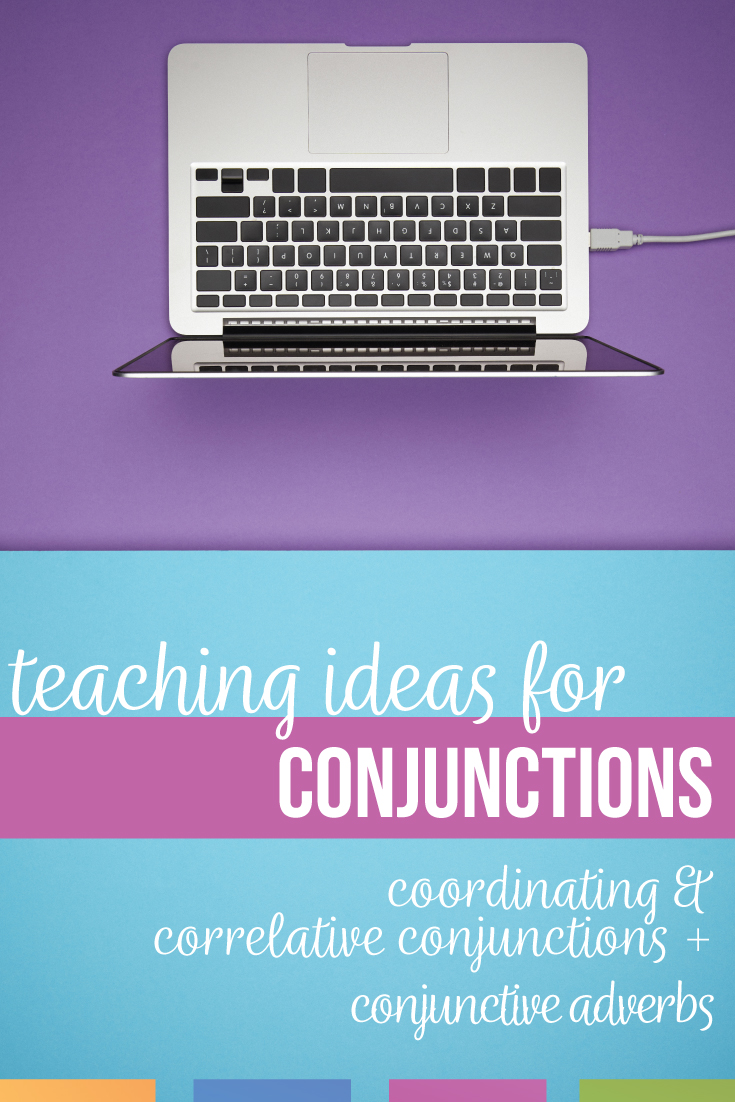
Conjunctions are important ELA domain specific vocabulary. My biggest piece of advice with the eight parts of speech is to establish with students. . . these ideas aren’t going away. We’re going to use these terms when we analyze author’s writing, in our writing, and with vocabulary. Through a variety of conjunction activities, we discover different uses and applications.
My conjunctions lesson plans are my final part of the eight parts of speech because older students understand interjections. To meet difficult language standards with older grades, I often scaffold the material back to certain parts of speech. Conjunctions play an important role in sentence structure and proper punctuation. I hope these methods help you and your students with conjunction activities.

